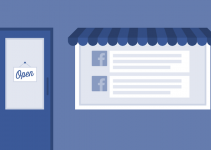Bringing Out Business Potential Through Excellent Brand Storytelling
Branding is recognizing your position in your particular industry and using it to establish your identity.
Think of it this way: you’re a fifth grader and you’re new in class. No one knows your name or your personality.
It is only during introductions that everyone gets to know your name.
At this point, you have already chosen the specific personality and perception you want others to see from you.
Your actions will supplement whether these traits you mention and act are true.
Developing your brand identity is quite the same except you have a bigger classroom, millions of classmates, and have no teacher to introduce you in class.
You are in full control of your business’ outward identity and personality.
The business’ actions take the form of its offers’ quality, attitude towards customers (specifically for product and service support), and other after-sales endeavors.
Indeed, if you introduce huge numbers of positive consumer experiences, then you earn their trust.
Happy customers who are loyal and advocating your brand are invaluable to any business (and you can use your website to create a sales funnel that creates these individuals).
Without any brand identity, a business’ efforts to expand will become fruitless.
To develop your brand, you need to have your own backstory.
If you’re not convinced, let’s take a look at one of the most successful brand identities and storytellers in the world.
Case in Point: Apple
Apple had revolutionized the entire tech industry with its innovative and cutting-edge products and services.
In the past, Apple was ridiculed for its overpriced computers as an alternative to the popular and formerly market-dominant Microsoft-run personal computers.
The company’s quality products have always been a level above today’s new technologies.
However, Apple’s brand storytelling has established its identity, creating a population of dedicated and advocating brand fans.
According to Bynder, Apple built its brand using emotion and positive aesthetic experiences.
Former CEO Steve Jobs made investors and fans special by creating conventions encircling its brand and technology.
The “intimate” conversations had fans adore the lifestyle introduced by its products and services.
Apple’s efforts had also empowered fans by creating a memory using these customer-centric conventions and expositions.
Apple’s products backed the “hype” its events have created by introducing simple and easy-to-use products.
To further win customer loyalty and advocacy, it always has open lines for customers and offers excellent after-sales content.
Aside from its events, the company sets its own standards for all its official retail centers and resellers.
Its comprehensive guide and list of requirements is enough proof that it prioritizes and secures its brand identity.
At this point, imagine taking everything about the origin story, intimate customer conversations, and the luxury-lifestyle message from its products and services.
You’ll get an innovative tech that is useful and innovative but has no potential to improve without a huge following.
Recently Successful Brand Storytelling Projects
Companies that have adopted brand storytelling have seen huge success include the following:
Airbnb
Its focus has always been the customer and the partners.
By bringing together two different cultures and sharing life-changing and compelling stories to its audiences, the service has seen its brand identity improve.
In fact, most of its add-on features are services offered by the partners, such as cooking, arts, or a personal tour.
These small details contribute more to developing customer and partner-generated content for the site.
Uber
The ride-sharing service has the same idea as Airbnb except it focuses on cars.
It highlights stories wherein using the service has saved customers from being late by finding a ride quickly.
Uber also highlights stories of its partner drivers who had found success and even romance through the ride-sharing platform.
Nike
It is officially the first company to use storytelling to win its audiences.
One of its most memorable advertisements was its commemoration of Michael Jordan’s career.
The one-minute feature showed the super athlete’s journey to achieving his dreams and the minor role Nike’s shoes played in the process.
Its legendary slogan “Just Do It” became famous for appearing during the commercial’s closing.
If you want to be remembered and see evolution in your products or services aside from continuous profits, you need to create a brand identity.
You need to create a campaign to do this.
Here’s an in-depth guide to help you get started.
The Components of a Successful Brand-Building Campaign Through Storytelling
Competitors Similar to Your Business
Before you began your business, you likely had an inspiration.
If your inspiration is another business’ success, then you can deem them as a competitor. They have a recipe for success.
However, as everyone knows, trademark and patents protect these secrets.
Reverse-engineering and finding clues in their activities through data collection are often performed to uncover these secrets.
In this light, knowing your competitors in the industry is imperative.
You can know this through the following:
- Offering the same product or service as you
- Involved in activities similar to yours
If you understand the actual response of their customers to their brand logo, slogan, product or service quality review, and other details customers are raving about, then you can set these as your end-goal milestones that will open a new business chapter for you.
Therefore, all information you collect from rival businesses will help you determine the customers likely interested in your offer, the manner you can position your brand, your logo, aesthetics, and company slogan, and even the core values of your business.
It is advised that you consult with professional competitor researchers to have an accurate interpretation of the gathered research data to ensure the precision and efficacy of your initial founding brand-building efforts.
Customers Likely Interested In Your Offers
As mentioned earlier, Apple’s computers were quite on par with dominant Microsoft’s devices during the same era.
However, Microsoft dominated the tech ecosystem.
This meant Apple had to create something groundbreaking to gain customer interest.
They then created their unique selling proposition.
However, Apple’s iPhone was a radical approach.
It was easier for them than most brands because they had all the resources that made it possible to invent new parts and fittings that made the device unique, intriguing, and up to Apple’s standards of a groundbreaking device.
Here are easy steps to develop your unique selling proposition:
Market Research: Indeed, even in a tightly competitive market, there will always be market gaps.
For example, the travel market has its respective “sales funnel” of tying up itineraries with airlines to create a seamless experience for tourists.
However, with startups allowing tech-savvy individuals to create their itinerary and pay for less, the gap in the market was filled.
In fact, new travel tech is seen as “disruptive,” challenging the industry norms affecting different markets.
Generate Interest: Going back once again to Apple’s efficient example, to generate interest, you need to make people special.
The public expositions showed the quality of their best-selling devices. Meanwhile, invitation-only exclusives meant the new tech was valuable, luxurious, and efficient.
This was the case when Apple first released the iPhone to the world. It had so much fanfare.
Everyone in the world, including their rivals, watched their every move until the release.
A Fair Price: There’s an easy way you can do this: lower your prices than the competition.
People will definitely be interested.
However, you need to turn profits.
A fair price is one where the hype does not overvalue the product or service’s value.
A good price is based on the current economic demand, rivals you need to contend with in the market, the customer’s spending power, and the resources needed for product manufacturing or service rendition.
How to Appeal To Emotions
Emotions are a common thing every human being experiences. However, an experience creates emotions.
Therefore, a shared experience can bring out emotions to relevant people.
Demographic data about your target audience can reveal and help you create content to position your brands while appealing to emotions.
Thailand commercials disguised as touching and thoughtful short films became famous in the last few years because of their positive message.
For example, Thai Life Insurance’s commercial short film “Silence of Love,” which aired in 2011, became infamous during the year.
The three-minute commercial focused on a father’s estranged relationship with his daughter despite living in the same space.
Its message is that people who seem not to care for you have the most love for you in the form of parents.
As an insurance company, they are aligned with “protection,” which is synonymous to “care.” This is a perfect example of appealing to emotion.
Another excellent example is Barbie’s brand repositioning from being the “perfect” appearance of a lady to transforming into different versions of color, appearance, size, and shape.
The positive “inclusive” message helped the toymaker Mattel’s Barbie brand become relevant.
It had successfully shed its former “perfect woman” impressions.
Aesthetically-Speaking
Aside from knowing the technical aspects of creating banners and logos to optimize your website SEO and ensure visibility in social media, it is also important to understand visual hierarchy and other design principles that evoke the feeling accompanying your brand.
Colors make you feel different things.
Seeing blue makes you feel peaceful because it is associated with the sky.
Meanwhile, brown colors give you a feeling of old probably because antique furniture and elderly tree wood has different shades of brown.
Color psychology is widely used in marketing.
By finding the right color for your logo and banner, you can reinforce the aesthetics within your audience, which helps improve brand awareness.
Typography is also important in design.
The fonts you choose affect the initial impression your audiences have for you.
For example, if you used a clean font such as Monospaced, then you can create a semi-formal impression.
Using the Sailor font can make you feel like a vintage, homegrown manufacturing small business.
The Core Values of Your Business
Imagine yourself in an interview and ask yourself: “What are my intentions for creating this business?”
Of course, you want to turn a profit from doing something in a niche that is interesting to you.
Another question to ask is: “If I served myself the same products and service, then what would I expect out of it?”
Customers expect top standards from businesses such as:
- Informative
- Niche Authority
- Quality Products and Services
- Great After-Sales
- Focuses on Improving Future Products and Services for Customers
Therefore, your business can create its own mission-vision by deriving your core values from these expectations.
It is important that you fulfill and put in practice all the values you list as synonymous with your brand because customers will definitely expect it from you.
Niche or Industry Authority Development
Notable brands such as Apple and Samsung dominate the smartphone industry today by establishing their brand as an authority on manufacturing the devices.
Apple took the first position as the creator of the entire niche with their iPhone devices.
Meanwhile, Samsung became the manufacturer’s biggest rival as it became the first Android OS-run smartphone maker with capabilities and longevity similar to Apple’s tech beast.
It takes plenty of work and resources to make your business multinational, and more so if you intend to make it a global authority.
However, focusing on dominating the local market is easier especially for small and medium businesses.
One way to do this is to have a brand that is approachable and helpful. Forums and online communities are great places to start.
However, do not go in and just try to comment your links to your site’s blog post as a solution.
Instead, talk to the individual with troubles and suggest useful solutions.
If they need something specific, then you can serve your own content.
In fact, you can create authority once you create trust with multiple users (who can upvote you).
As mentioned, helpful and detailed content that aims to help gives any business the advantage of building their site authority.
In turn, it also builds their brand’s authority.
You can also skip forum and content marketing by having people say the positives of your product or service by concentrating on your output quality.
As most customers trust actions more than words, your output is the final outcome and is your individual representative to any customer.



